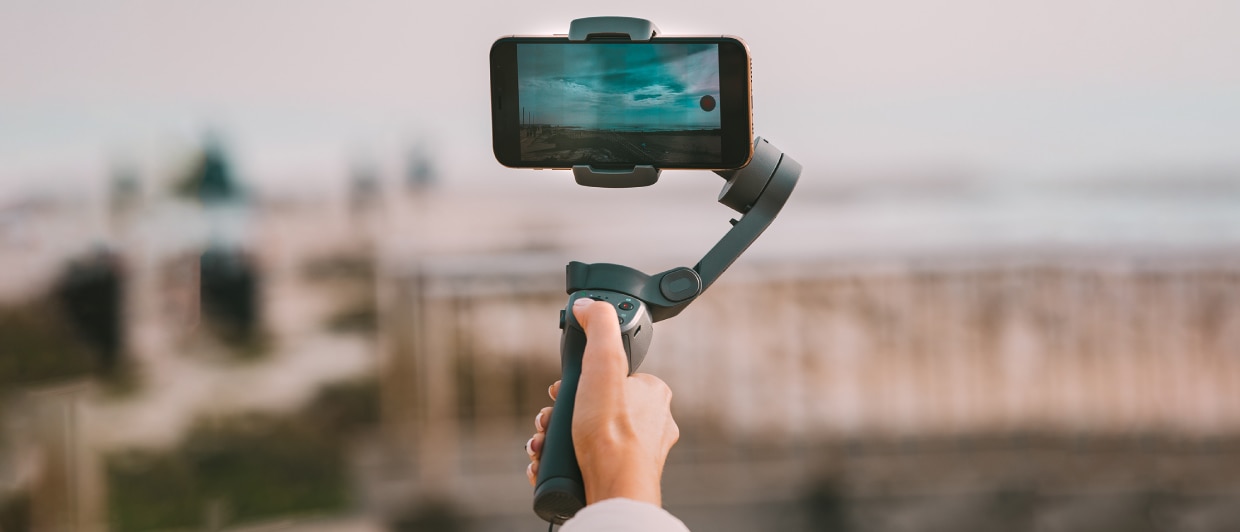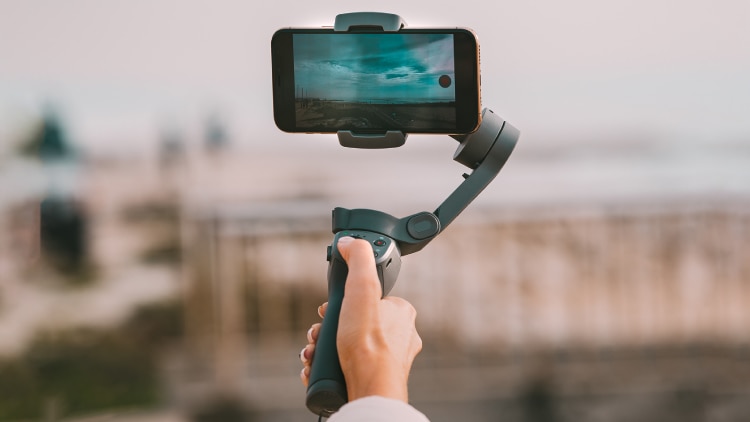

2025 Stabilizer Shopping Guide & Recommendation
Many people who travel or take part in outdoor activities use their smartphones or photographic equipment to take pictures and videos. Some even upload their pictures and videos to social media as Vloggers. However, if you want to take more professional images, you’ll need a stabilizer to keep your camera steady for shooting.
There are various types of stabilizers on the market including three-axis anti-shock stabilizers, camera stabilizers and mobile phone stabilizers etc. Which one should you buy? Find out the suitable one after reading this purchase guide and start shooting videos with quality and stable images that you are happy with.
Three-axis Stabilizer
You’ve probably heard of the three-axis stabilizer. This is how it works. The stabilizer makes use of the gyroscope components and technology used in smartphones. When one moves horizontally, vertically or in different directions, the stabilizer auto-adjusts the screen to achieve the most stable position. Most models in the market today use this three-axis stabilization technology.
Types of Stabilizer
1. Phone stabilizer
- Advantages: Suitable for most photos as long as the simple settings can shoot videos with high stability; ideal for travelers and everyday shooting; there are lots of options in the market and the prices are very affordable
- Disadvantages: If you use a smartphone for shooting, it can be inconvenient when you need to refer to a map or for communication; it also takes more time to install the stabilizer onto your phone and set it up so you won’t be able to take pictures quickly; the smartphone also runs out of power if you need to shoot for a long time, so you need to carry additional portable chargers to keep the phone running
2. Sports/motion camera stabilizer
- Advantages: Sports/motion cameras are often used to capture point-of-view images during hiking, skiing, cycling and other sports; there are also stabilizers you can wear on the left side of your head or body so you can shoot more stable front on images
- Disadvantages: Since sports/motion cameras are relatively compact and the camera’s centre of gravity is not evenly distributed, the stabilizer will need more time to adjust; some sports/motion cameras come with waterproof features and accessories, but not many stabilizers have waterproof accessories, this could limit what you can shoot
3. Camera stabilizer
- Advantages: As the camera image quality is superior, the stabilizer used for shooting videos is also very high quality and is more suitable for shooting enthusiasts; you can also change the lenses so the resulting videos have more perspective and effect; the camera can also be charged independently so you only need to connect the portable charger to the stabilizer to enjoy longer shooting times
- Disadvantages: The camera stabilizer is generally heavier so you could become tired with the weight after a long shoot; you also need to have a basic knowledge of camera settings such as exposure, white balance, focus, etc., so it may be more difficult for novices to control
4. Built-in lens stabilizer
- Advantages: Because it is built-in, there is no need to install it onto the smartphone or camera; simply boot up and use; this type of stabilizer is usually very compact, making it extremely easy to carry around
- Disadvantages: Because it is built-in, it cannot be replaced with other focal length lenses so the shooting skills and techniques are relatively one-sided; the screen on this type is smaller so you may be unable to clearly preview the material before you shoot
Special Features
1. Easy to set up stabilizer with mobile apps
Many stabilizers support mobile apps for better control. Besides general zooming in and out, some support time-lapse photography, fixed point up, down, left and right slow movements which are very good for capturing buildings. Some brands of mobile phone have apps that allow you to simply shoot, directly edit the footage and upload to social media.
2. Follow mode
Some stabilizers support phone apps that follow the movement of the target and are therefore ideal for photographing children, animals and sports scenes.
Things to Consider
1. Battery capacity
Be aware of the battery capacity during travels or outdoor shooting. Most stabilizers on the market offer 5 to 10 hours of battery power. Usually the larger the battery capacity, the longer it takes to charge. Choose according to your shooting needs.
2. Acceptable load
Regardless of whether you are using a phone, camera or sports/motion camera stabilizer, there is an acceptable load. Excess load could lead to stabilizer axis failure resulting in an unstable video. Find out the weight of your shooting equipment and include the weight of the protective case before you make a purchase so you can find one that is most suitable.
